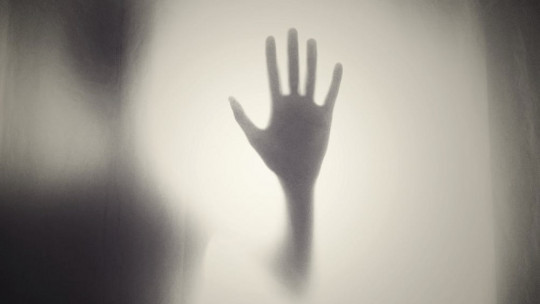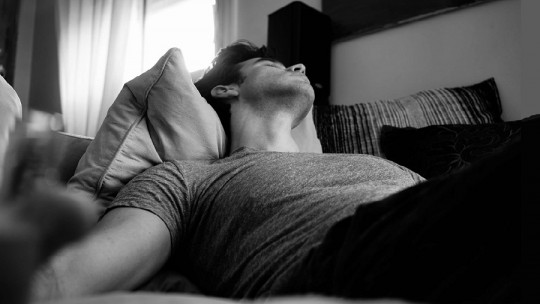
Phobias are anxiety disorders, which means that they cause great discomfort to people who suffer from them, who feel anxious symptoms when they are faced with the phobic stimulus or imagine it. Although there are phobias that are almost not disabling, except in specific cases, due to the infrequency with which the phobic encounters the stimulus, in other cases the opposite occurs and it is difficult to lead a normal life for those who suffer from them.
In this sense, one of the most complex phobias is haphephobia, which is the irrational fear of being touched. Luckily, phobias can be treated and the patient can overcome this disorder, and this is no exception. In this article we explain what this disorder consists of and what its treatment is.
What is haphephobia?
Haphephobia is a specific phobic disorder (unlike agoraphobia or social phobia) that causes great suffering in the person who suffers from it.
It is an irrational fear of great intensity that manifests itself when the individual suffering from the phobia comes into physical contact with other people and is touched. It produces a series of cognitive, physiological or behavioral responses, among which extreme anxiety and the attempt to avoid the feared stimulus to reduce the unpleasant sensation stand out.
Hafephobics suffer serious social problems, since they fear interaction with other individuals in case they may come into contact with them. Therefore, a simple greeting or hugging your own parents or spouse becomes a situation that produces intense feelings of fear. These individuals may avoid situations in which they may come into contact with others, even acquaintances.
Causes
Phobias usually have their origin in the most ancestral part of the brain, and according to some experts, we are biologically programmed to suffer fears of certain stimuli. This thing that has worked so well for us for centuries to preserve the existence of human beings, sometimes causes this type of disorder today. That is why phobias do not respond to logical arguments, and the alert reaction takes over the subject, who feels as if he or she is facing real danger.
Phobias, therefore, develop thanks to one of the most basic forms of learning in human beings, a type of associative learning called classical conditioning that was initially discovered by Ivan Pavlov, a Russian physiologist who carried out a series of experiments with dogs. .
Its initial objective was to measure the salivation of the dogs and that is why it gave food to these animals, since saliva is a reflex act that is produced to promote digestion. Over time, Pavlov realized that although at first the dogs salivated when food was presented to them, after several trials, the mere presence of the researcher triggered salivation, since the animals had learned that when the food appeared, they would receive the food. Classical conditioning causes an association between a stimulus that provokes a reflex response and another that does not, but in the end the latter ends up producing the same response as the other stimulus to which it is associated.
Later, it was John B. Watson, an American scientist, who verified that classical conditioning also occurred in humans. In fact, he was able to make a child learn a phobia of a white rat that previously did not cause the child any discomfort.
You can learn more about this study in the following video:
Other origins of phobias
Phobias, therefore, are learned through classical conditioning because the person suffers a significant traumatic event. But phobic disorders, and especially in the case of haphephobia, vicarious conditioning can also be a cause of this pathology.
Vicarious conditioning is neither more nor less than observational learning For example, the person has seen a movie in which the main actor is infected with a disease by coming into contact with the skin of others. The phobic may suffer from irrational fear and unrealistic beliefs as a result of the emotional impact caused by some event they observe, in this case, the movie.
Symptoms of fear of contact with other people
Phobias, as I mentioned previously, produce cognitive, physical, physiological and behavioral symptoms.
They are the following:
Treatment and therapy
Phobias are one of the main reasons why people require psychological assistance, and although they cause great discomfort, They respond really well to psychological treatment. In extreme cases, pharmacological treatment is indicated, but always together with psychotherapy.
One of the most used therapeutic models is cognitive behavioral therapy, which aims to modify internal events (thoughts, beliefs and emotions) and people’s behavior to improve their well-being. Relaxation techniques, cognitive restructuring or exposure techniques are some of the most used for this type of pathology.
Within the latter, highlights systematic desensitization with which the patient performs a series of exercises that gradually expose him or her to the phobic stimulus while learning more adaptive strategies to confront fear and anxiety.
In recent years, new therapeutic methods are showing their effectiveness in different scientific studies. Among these, Mindfulness-Based Cognitive Therapy (MBCT) and Acceptance and Commitment Therapy (ACT) stand out. New technologies are also applied in therapeutic sessions, since virtual reality (VR) or augmented reality are useful tools which are increasingly used to expose the patient to the phobic stimulus.
In fact, today it is possible to find “apps” for the treatment of phobias and for the treatment of anxiety disorders. In the following links you can find more information:








